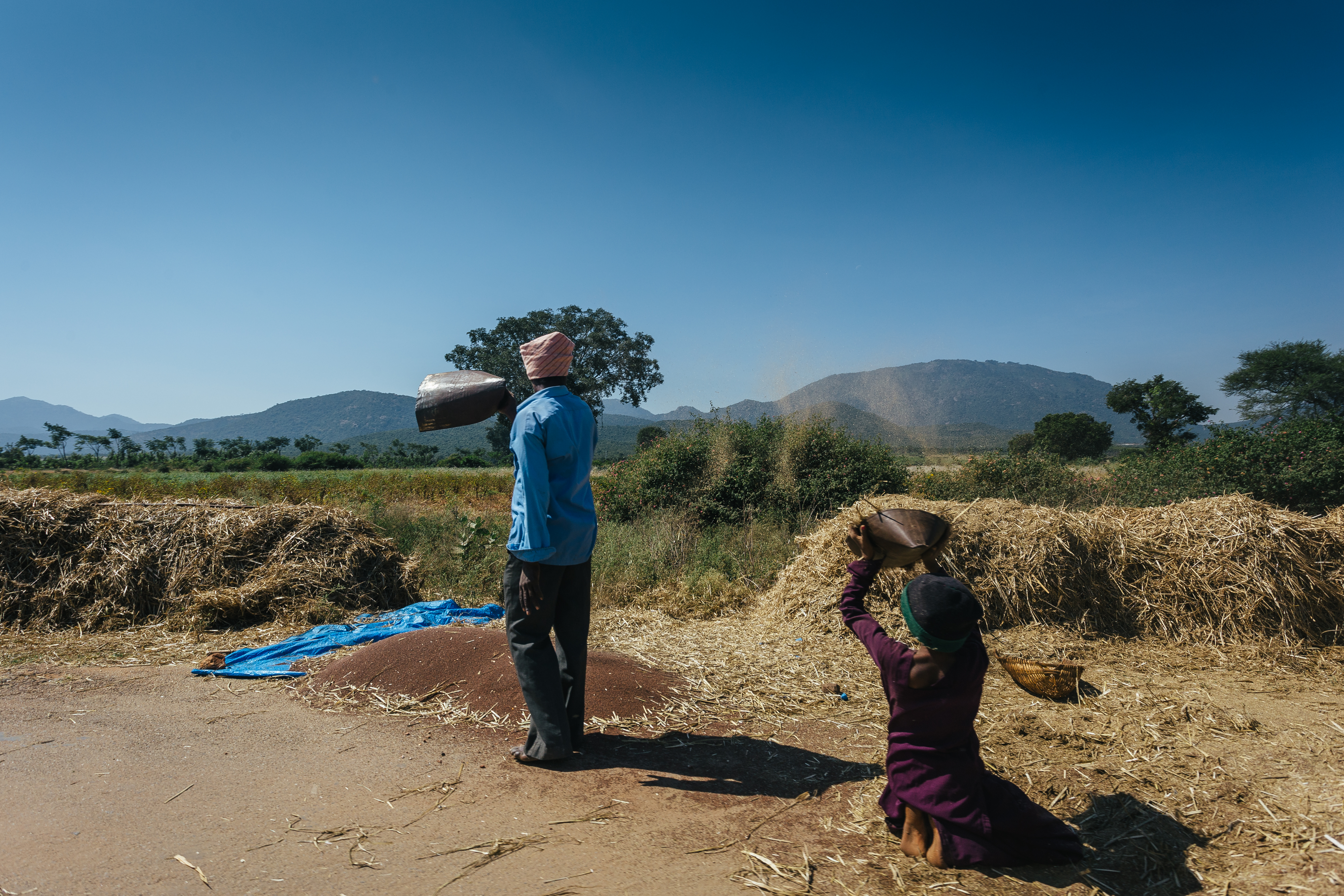Overview
Researchers
Namrata Kala
W.Maurice Young (1961) Career Development Professor of Management and an Assistant Professor in Applied Economics at the MIT Sloan School of Management
Julieta Caunedo
Associate Professor of Economics, Cornell University
- Country
- India
- Timeline
- 05/13/2019 - 12/31/2020
- Constraints
- Input and Output Markets
- Technology Category
- Inputs
- Sample
- 6650 farmers across 210 villages operating in the state of Karnataka in India

Photo Credit: Joseph D'Mello
In India, in the midst of declining plot sizes for small farmers, increasing agricultural productivity remains central to alleviating poverty. Mechanization can boost productivity, but accessing equipment is typically difficult for smallholder farmers since farmers who informally rent out machines usually prioritize larger farms. Researchers randomly provide farmers with vouchers to subsidize mechanization rental access from an implementation partner or an equivalent cash grant in order to understand whether access to formal machine rentals will increase mechanization, and whether increased mechanization affects smallholder farmers’ labor allocation and farm productivity.
Policy Issue
Using machines to increase farm productivity has become a primary feature of modern agriculture in developed countries, but mechanization remains rarely used in lower income countries. As modern agricultural equipment tends to be more profitable on large farms, renting out equipment is a possible solution to increase the productivity of smallholder farmers for whom it would not be profitable to buy their own equipment. In recent years, private providers of equipment services have leveraged new technologies, such as mobile phone apps, to rent out machines to farmers. However, there is little evidence on whether access to formal machine rentals will increase mechanization among smallholder farmers, or whether increased mechanization affects smallholder farmers’ labor allocation and productivity.
Context of the Evaluation
Average plot sizes for smallholder farmers in India declined from 1.2 hectares to 1.08 hectares between 2010 and 2015. With decreasing plot sizes, plot productivity is more important than ever before to ensure the welfare of 750 million smallholder farmers across India. This study takes place among mostly smallholder farmers in the state of Karnataka with median holdings of 1.2 hectares per household. These farmers may struggle to rent agricultural equipment because farmers who own machines (such as tractors) and informally rent them out prioritize their farms and other large farms in their network. This delays rental availability for small-scale farmers. For this evaluation, researchers have partnered with one of the biggest providers of rental agricultural equipment in India; this provider provides rental services for over a hundred thousand farmers across several Indian states. The partner provides a wider variety of services on a first come, first serve basis, with no price fluctuations in the peak season.
Details of the Intervention
To encourage take up of mechanization, researchers will randomly assign villages to receive either a voucher which subsidies mechanization rentals from the implementation partner or an equivalent cash grant. Within villages assigned to receive mechanization vouchers, researchers will vary the number of farmers that receive vouchers and the period of time during which the vouchers can be redeemed. The intervention will take place during the kharif season, which is the main agricultural season across most of India and lasts from April to September.
Researchers will randomly assign 210 villages into the following three groups, and will then will randomly assign farmers within those villages who previously expressed interest in mechanization to either an intervention group or a comparison group:
- High-Intensity Mechanization Access (70 villages with 30 treatment farmers and 15 comparison farmers surveyed in each): In addition to the relative number of farmers offered vouchers, this group is considered high-intensity because their vouchers last for most of the agricultural season, from June to September, which increases the availability of mechanization.
- Low-Intensity Mechanization Access (70 villages with 10 treatment farmers and 15 comparison farmers surveyed in each): In addition to the relative number of farmers offered vouchers, this group is considered low-intensity because their vouchers expire in July instead of September.
- Low-Intensity Cash Grant (70 villages with 10 treatment farmers and 15 comparison farmers surveyed in each): These farmers will receive an unconditional cash grant equal in amount to the subsidies (about $30 for smallholder farmers and $50 for medium-sized farmers). Farmers can use the cash grant to access mechanization rentals in either the formal or informal market, or spend it on other expenditures as they see fit.
The researchers will measure whether mechanization access can increase productivity and profit through surveying land allocation across crops, input quantities and prices, labor use (family vs. hired), total output and total output sold, yields, and profits. They will also assess real-time transaction and customer experience data from the implementation partner.
Results and Policy Lessons
Full results forthcoming; read the project write-up.
